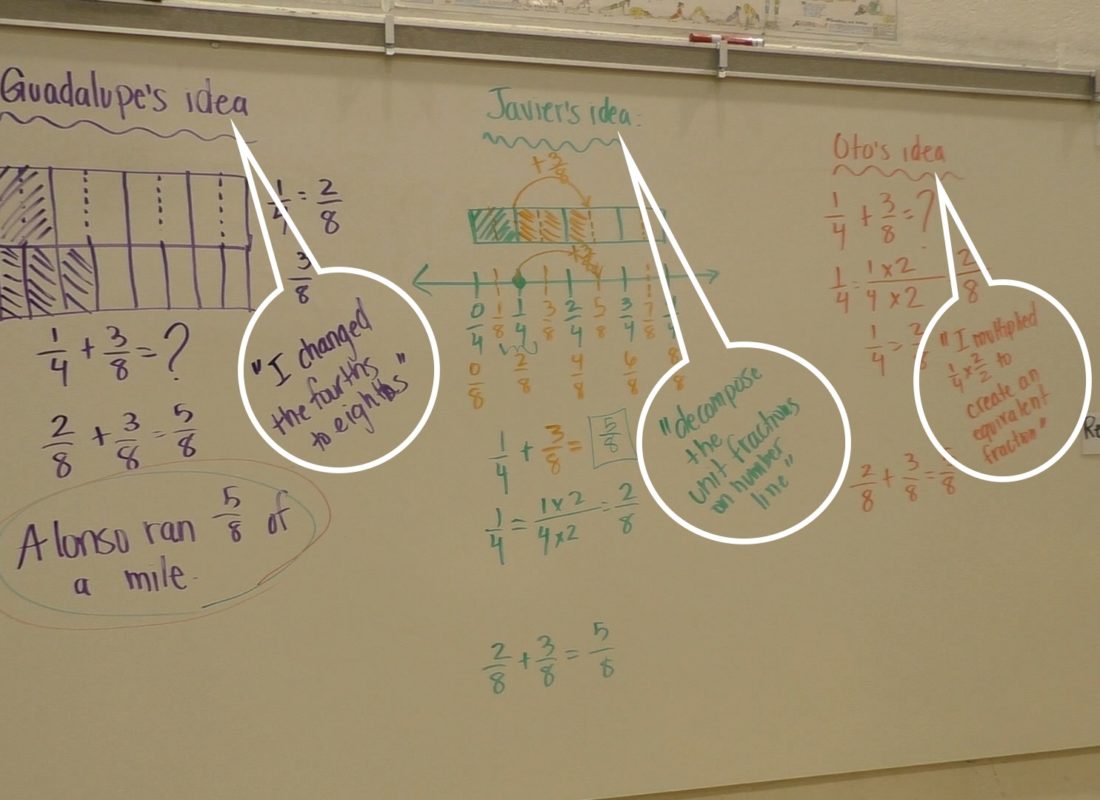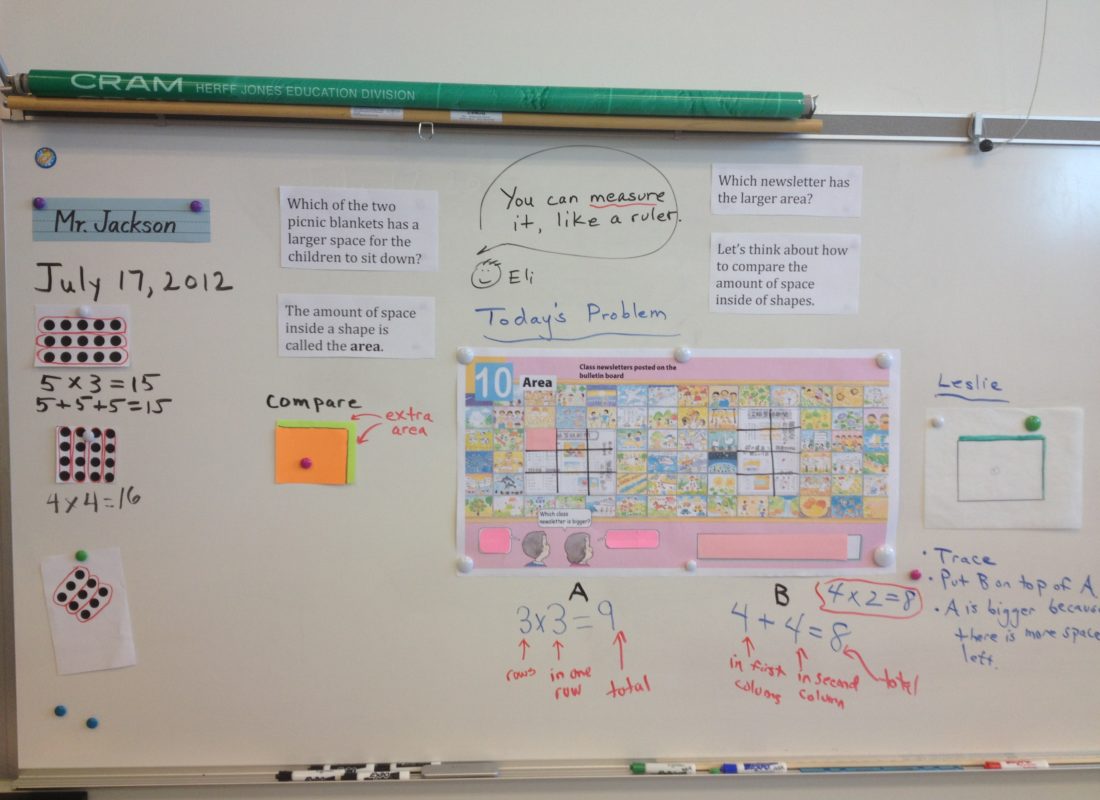This course for K-6 educators explores the power of student reflective journals in building students’ mathematical knowledge and practices.

Session 1: Explore the Inquiry Topic & Reflect on Your Current Practice
Outside-of-class meeting | Time: 1 hour | Materials: Class set of recent student journals
Focus
In this session, you will examine journals to see how students draw on their prior knowledge, consider strategies to encourage this habit and identify strategies to try in your classroom.
The field of mathematics grows because mathematicians use prior knowledge to build new concepts and procedures. How can we help our students build this key mathematical disposition?
Researchers James Hiebert, Thomas Carpenter, and colleagues write that “Tasks must allow students to treat the situation as problematic, as something they need to think about rather than a prescription they need to follow. ...In order for students to work seriously on a task, it must offer students the chance to use skills and knowledge they already possess.”
1A: Reflect on Your Current Practice
- What were some successes you had in using the new strategies to encourage students’ use of prior knowledge?
- What were some challenges?
- What aspects of these strategies would you like to carry forward into your future instruction?
- What would you like to change or add?
1B: Learn about New Strategies
Colleagues and research can be great sources of additional ideas for building a classroom environment in which students routinely draw on their prior learning. Here are several that were shared with us. Try these or brainstorm your own.
- When you pose a new type of problem to students, ask them what they notice about it or what they already know that might help them solve it. You can see an example of this in the classroom here:
Confronted for the first time with a problem of adding fractions with unlike denominators, students noticed that the denominators differed and that it was addition (not comparison) of fractions, sparking the two key pieces of prior knowledge that would enable the students to develop (rather than be given) an addition procedure–their knowledge of fractions addition and equivalence.
- Help students become aware of the role their ideas and prior knowledge play. For example, teacher Bill Jackson uses a thought bubble on the board to highlight ideas that students come up with as they think about a novel problem. Students may enjoy using bubbles or other symbols to note their questions and their ideas about related knowledge.
- Encourage students to look back at in their journals, by asking questions such as “What do we already know that might help us solve the problem?”, “Where can we look to help us remember what we have already done?” When students use their journals as a reference, bring this to the attention of the class.
1C: Plan to Try New Strategies
- Identify one or two strategies you will try in your classroom, designed to build students’ use of prior knowledge
- Identify evidence will you look for in journals to inform you about the impact of the strategies
Session 2: Try New Strategies in Your Classroom
In class | Time: 3-5 lessons over 1 to 2 weeks
- Try out the strategies in your plan for approximately 3-5 lessons in which journals are being used
- If possible, jot down notes during or soon after each lesson to capture your experiences with the strategies that you tried
- Bring your notes and the class set of students’ journals to the next session
Session 3: Examine Evidence and Refine Your Plan
Outside-of-class meeting | Time: 30-60 minutes
3A: Examine Evidence from Lessons and Revise Plan
- What were some successes you had in using the new strategies to encourage students’ use of prior knowledge
- What were some challenges?
- What aspects of these strategies would you like to carry forward into your future instruction?
- What would you like to change or add?
3B: Make a Plan for Your Second Round
- Identify a new strategy (and/or a refined strategy) you will try in the upcoming 3-5 lessons to encourage students’ use of prior knowledge
- Identify the evidence will you look for to inform you about the impact of this change
Session 4: Test Your Refined Approach
In class | Time: 3-5 lessons over 1 to 2 weeks
- Try out the strategies for approximately 3-5 lessons in which journals are being used (about 1-2 weeks)
- If possible, jot down notes during or soon after each lesson to capture your experiences with the strategies that you tried
- Bring your notes and your students’ journals to the next session


